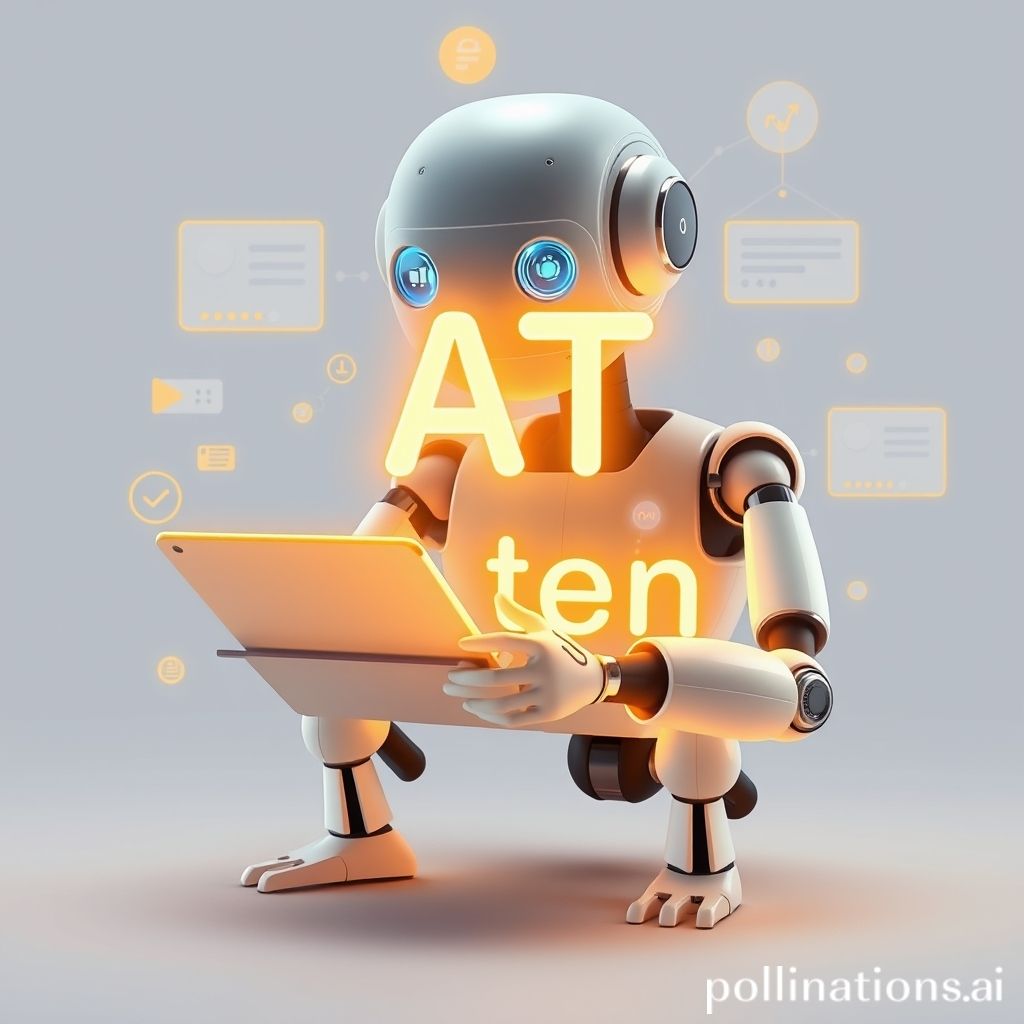Table of Contents
- Introduction
- Understanding AI Content Creation and Its Importance
- Choosing the Right AI-Powered Tools for Content Generation
- Setting Up AI Content Generators: Tools, Plugins, and SaaS Solutions
- Integrating AI with WordPress for Automated Content Creation
- Scheduling and Managing Content with AI Writing Tools
- Optimizing AI-Generated Content for SEO and Readability
- Automating Workflows: From Idea Generation to Publishing
- Evaluating and Improving AI Writer Performance
- Conclusion
- Frequently Asked Questions
Introduction
Welcome to the dawn of a new era, where technology and creativity intersect like never before. Imagine having an artificial intelligence at your fingertips, ready to assist you in crafting engaging content for your blog, your business, or any other endeavor that requires the written word.
In this comprehensive guide, we will take you step by step through the process of creating your own AI content writer, tailored to your specific needs and designed to help you save time and enhance your creative output.
Whether you’re a seasoned tech enthusiast or a curious beginner, this guide is here to demystify the complexities of AI and put the power of machine learning directly into your hands. Get ready to shape the future of content creation and elevate your writing game to unprecedented heights.
Understanding AI Content Creation and Its Importance
Ever wondered how an AI content writer does its magic? Well, it’s like turning on a faucet of creativity, where data flows like water. Understanding AI content creation is not just about fancy algorithms; it’s about teaching a machine to think and write like us. In a world where content is king, this digital scribe is the unsung hero.
At its core, AI content creation involves using machine learning models to generate text that reads like a human wrote it. This is where natural language processing (NLP) comes into play, helping the AI understand and mimic human language nuances. Imagine it as teaching a toddler a new language. With lots of data as its tutor, the AI learns through patterns and examples.
So, why is it important, you ask? Picture this: you’re juggling multiple tasks, and out of nowhere, the AI swoops in like a caped crusader to save the day. It crafts personalized content, boosts efficiency, and frees up your time for more strategic endeavors. It’s like having an invisible writing partner who never tires and always has your back. In short, AI content creation is not just a technological marvel; it’s a game-changer for the modern content landscape.
Choosing the Right AI-Powered Tools for Content Generation
Choosing the right AI-powered tools for content generation can be a game-changer. Remember the gold rush? Well, finding the perfect AI tool is like striking gold. First things first, you need to figure out what you’re aiming for. Are you looking for something that can churn out quick blog posts, or do you need a tool that’s more like a Swiss Army knife, handling everything from editing to SEO optimization?
One popular choice is GPT-3, which feels like having Shakespeare’s ghost as your scribe, churning out eloquent prose like nobody’s business. But beware, not all that glitters is gold. Some tools may promise the moon but deliver subpar content. So, it’s crucial to read reviews and maybe even take a few for a test spin.
Also, think about ease of use. If the tool’s interface is more confusing than a labyrinth, you might end up spending more time figuring it out than actually writing. Cost is another factor. Some tools can be as pricey as a date with royalty, while others are gentler on the wallet. In the end, the right AI tool should make your content shine like a well-polished gem. So choose wisely, and let the magic begin!
Setting Up AI Content Generators: Tools, Plugins, and SaaS Solutions
Setting up AI content generators is a bit like planting a seed in a garden. You start with the essentials: tools, plugins, and SaaS solutions. So, what tools do you need? Well, think of a sculptor’s chisel—tools like Wordtune or Grammarly can refine the raw output of AI, shaping it into polished content. As for plugins, they’re the little elves making magic happen behind the scenes. Plugins like Jasper and Writesonic can be integrated into your existing CMS, spitting out engaging content faster than you can say ‘abracadabra!’ Now, when we talk about SaaS solutions, it’s like hiring a team of experts without the hassle. Services like Copy.ai or ContentBot are cloud-based, meaning you can access them from anywhere, no downloads required. Remember when Aunt Helen moved her entire business to the cloud? She said it felt like a burden lifted, like she had wings! The same goes for these AI writing SaaS platforms—they offer flexibility, scalability, and reliability without breaking a sweat. Imagine not having to worry about server upkeep or software updates; it’s all done for you. Setting these up can be as easy as pie, with most platforms offering user-friendly interfaces and robust support systems. And there you have it, a flourishing AI content garden ready to bloom!
Integrating AI with WordPress for Automated Content Creation
Imagine you could snap your fingers and voila, your WordPress blog churns out perfectly crafted posts. Well, integrating AI with WordPress for automated content creation isn’t exactly magic, but it’s close! First things first, you’ll need to pick a reliable AI content generator—think of it as your digital muse. Tools like GPT-3 or Jasper.ai are popular players in this arena.
To get started, install a plugin in your WordPress dashboard that supports AI content generation. AI Engine or OpenAI’s GPT-3 are good bets. Pop open your WordPress admin panel, navigate to ‘Plugins,’ and click on ‘Add New.’ Type in your chosen AI tool, hit ‘Install,’ and then activate it.
Set up the API keys provided by your AI service for seamless communication between your blog and the content generator. It’s like setting up a direct hotline to your AI. Under plugin settings, you’ll often find an ‘API’ or ‘Integration’ tab where you can paste these keys.
Once done, you can summon AI to create posts, come up with titles, or even generate entire articles with a few clicks. Just remember, even the smartest AI doesn’t rival the human touch, so give those posts a once-over before hitting ‘Publish.’ Happy automating!
Scheduling and Managing Content with AI Writing Tools
Using AI writing tools to schedule and manage content is like having a digital personal assistant that never sleeps. Imagine, you wake up one morning with a spark of inspiration but are bogged down by meetings all day. No worries! AI’s got your back. With a few clicks, you can whip up a detailed content calendar. It magically organizes your content, scheduling posts like a seasoned maestro conducting a symphony.
Life gets hectic, and sometimes you might drop a ball. But an AI tool? It’s rock-solid, ensuring your content pipeline flows smoothly. Picture this: it’s 3 AM, and most of the world is asleep. Meanwhile, your AI tool is hard at work, publishing posts, engaging with your audience, and keeping the momentum going. It’s like having a superhero cape for your content strategy.
Transitioning to AI tools is like switching from riding a bicycle to driving a car. The speed, efficiency, and reliability are unmatched. These tools track your audience’s engagement, offering invaluable insights like a wise old sage. Want to tweak your strategy? No problem! The data is at your fingertips, guiding you like a lighthouse in a storm. It’s not just management; it’s a revolution!
Optimizing AI-Generated Content for SEO and Readability
Optimizing AI-generated content for SEO and readability is like finding the sweet spot between art and science. First things first, make sure your content includes relevant keywords without sounding like a broken record. Nobody likes keyword stuffing! Use natural language; even though an AI is writing it, the prose should flow like a conversation with an old friend.
Next, think about structure. Break up walls of text with subheadings, bullet points, and images. It makes the content easier to skim—something we’ve all done when short on time. Don’t forget, meta descriptions and alt texts for images are your trusty sidekicks in this journey.
Speaking of friends, internal and external links are like social proof for your content, lending it credibility and context. Just like networking at a party, but with hyperlinks!
And don’t shy away from the Hemingway approach—keep sentences short and sweet. Readers aren’t looking to solve a riddle; they want clear, actionable insights. Oh, and double-check the grammar and syntax. Even the best AI can fumble a comma or mix up homophones.
Lastly, make it engaging. Throw in an anecdote or two, a splash of humor, or a rhetorical question to keep readers hooked. Voila! You’ve got AI-generated content that’s both SEO-friendly and reader-approved.
Automating Workflows: From Idea Generation to Publishing
Imagine having a digital assistant that works tirelessly, never needs a coffee break, and can generate brilliant ideas around the clock. That’s the magic of automating workflows in content creation! Starting with idea generation, AI can sift through truckloads of data, picking out trends and hot topics faster than you can say ‘Eureka!’ With AI’s lightning-speed processing, creative sparks can be fanned into flames.
Next, these ideas are transformed into content drafts. Think of AI as a master weaver, intertwining words into a tapestry of engaging narratives. From catchy headlines to compelling body text, it’s like having a seasoned writer who’s always on the ball. The drafts then undergo a fine-tuning process, checking for grammar goofs and ensuring the tone matches your audience’s expectations.
But wait, there’s more! The final step is publishing. Here, AI steps up once again, scheduling posts at optimal times and ensuring your content reaches the right eyeballs. It’s like having a publishing fairy who waves a wand, and voila, your content is live. Automating these steps not only saves time but lets you focus on strategizing and creating even more stellar content.
Evaluating and Improving AI Writer Performance
So, you’ve built yourself an AI content writer, but how on earth do you evaluate its performance? First off, let’s talk about the good old accuracy test—does it hit the nail on the head or miss the mark? You’ll want to compare its output to human-written content to see how it stacks up. Can it spin a yarn as engaging as a seasoned storyteller, or does it sound like a broken record? Consistency is key.
Then there’s the flair—does it have the spark of creativity, or is it just churning out bland, robotic text? Imagine training a dog to jump through hoops; your AI needs that kind of polished finesse. Keeping an eye on user feedback is golden—if readers are clicking, sharing, and staying hooked, you’re on the right track.
Now, let’s not ignore those bugs and kinks. Like a gardener weeding a garden, you’ll need to nip those errors in the bud. Incorporating constant updates and fine-tuning the algorithms can help you keep your AI sharp as a tack. Think of it like polishing a gemstone; the more you refine, the more it shines. A/B testing is another nifty trick—compare different versions of your AI to see which one hits the jackpot. And remember, Rome wasn’t built in a day. Keep tinkering and you’ll see your AI writer flourish!
Conclusion
In wrapping up, creating your own AI content writer isn’t merely a venture into cutting-edge technology; it’s an essential move for future-focused content creators. From understanding AI’s role to integrating and optimizing it within your workflow, this guide provides a comprehensive roadmap. However, the landscape is competitive, and tools like WPHorde are pivotal. Those who don’t adopt AI-driven tools risk falling behind. Don’t be left out of the evolution—embrace these innovations now. Act today and transform your content strategy with WPHorde!

